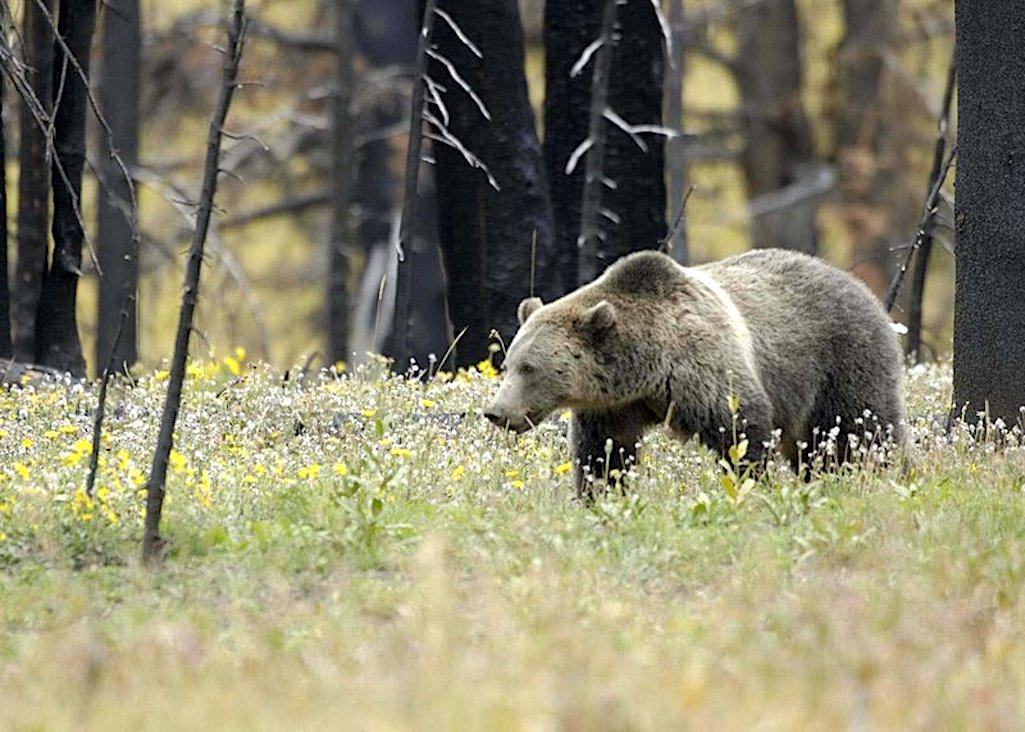
A lawsuit aims to restart the grizzly bear recovery program for the North Cascades of Washington state/USFWS
A lawsuit filed Wednesday seeks to renew the grizzly recovery program for the North Cascades of Washington state, a program that was supported by former Interior Secretary Ryan Zinke but scuttled by his successor, David Bernhardt.
The lawsuit, filed by the Center for Biological Diversity, maintains the Trump administration's abandonment of the program violates the Endangered Species Act and was based on politics, not a conservation-driven decision.
Bernhardt's decision back in July, the lawsuit contends, "reflects a complete reversal in the agencies’ course of action, changing a multi-year-long process that the agencies had asserted was necessary to recover grizzly bears in the North Cascades."
That decision, the lawsuit claims, was not based on "a reasoned analysis." As such, the decision violated the Administrative Procedures Act.
“The Trump administration’s purely political decision to axe this conservation program was a massive blow to the grizzly bear recovery program,” said Andrea Zaccardi, a senior attorney at the Center. “We’re hopeful that our lawsuit will put grizzly bears in the North Cascades back on the road to recovery.”
When he ended the program, Secretary Bernhardt said his decision was based local opposition to the effort.
“(U.S.) Representative (Dan) Newhouse has been a tireless advocate for his community and his constituents regarding plans to reintroduce grizzly bears into the North Cascades Ecosystem,” Bernhard said back in July. “The Trump administration is committed to being a good neighbor, and the people who live and work in north central Washington have made their voices clear that they do not want grizzly bears reintroduced into the North Cascades. Grizzly bears are not in danger of extinction, and Interior will continue to build on its conservation successes managing healthy grizzly bear populations across their existing range.”
For more than two decades, biologists have been working to recover the North Cascades' grizzlies, a threatened species. And while more than a few reports of grizzly sightings in the ecosystem that stretches north to Canada are received by state and federal officials each year, most turn out to be black bears.
Back in 2017, National Park Service staff at North Cascades National Park were evaluating public comment previously made on the recovery proposal, but Interior officials told them to stop the work. But in March 2018 then-Interior Secretary Zinke told the agency to resume the work.
Last summer, Interior staff said grizzly recovery in the United States had been quite successful.
"The National Park Service and U.S. Fish and Wildlife Service have led these efforts for self-sustaining grizzly bear populations, primarily focused in six areas of Idaho, Montana, Washington and Wyoming," Interior said in July.
The recovery program would have involved transporting grizzly bears into the North Cascades from other areas with more robust grizzly populations. Scientists agree that grizzly bear recovery in the North Cascades requires augmentation of its tiny population, according to the Center for Biological Diversity.
According to the complaint (attached below), the Trump administration’s termination of the grizzly bear program violated the Endangered Species Act, which requires conservation of listed wildlife, as well as other federal laws. The lawsuit asks that the court order the federal agencies to proceed with the abandoned restoration planning in the North Cascades.
The North Cascades is one of the largest wild areas in the lower 48 states, encompassing more than 95,000 square miles in north-central Washington. It includes North Cascades National Park and large areas of surrounding national forest. According to scientists, the area contains prime habitat that could support approximately 280 grizzly bears.
“Grizzly bears once thrived in the North Cascades and they could again, but only if the feds do their job,” said Zaccardi. “Abandonment of efforts to restore bears to this area would ensure the local extinction of grizzlies in Washington. We’re not going to let that happen.”
Grizzly bears historically ranged from Alaska to Mexico, with an estimated 50,000 bears occupying the western half of the contiguous United States. With European settlement of the American West, they were shot, poisoned and trapped to near extinction. Grizzly bears in the contiguous United States were listed as a threatened species under the Endangered Species Act in 1975.
Today fewer than 2,000 grizzlies are found in five isolated populations in the northern Rocky Mountains and North Cascades. The North Cascades represents one of six primary recovery areas identified by the Fish and Wildlife Service, but grizzly bears are nearly extirpated from that area.
The Fish and Wildlife Service and National Park Service have 60 days to respond to today’s lawsuit.



 Support Essential Coverage of Essential Places
Support Essential Coverage of Essential Places







Add comment